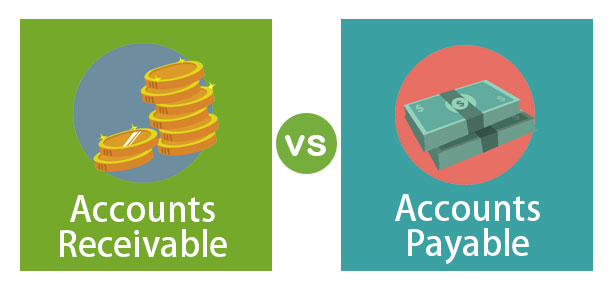Table Of Contents
Differences Between Accounts Receivable and Accounts payable
Account receivable (classified as current assets) is the amount the company owes from the customer for selling its goods or providing services. However, accounts payable (classified as current liabilities) is the amount the company owes to its supplier when any goods are purchased or services are available.
Table of contents

Comparative Table
| Basis | Accounts Receivable | Accounts Payable |
| Meaning | Accounts Receivable is the amount that the customers of the company owe to it. | Accounts Payable is the amount that the company owes to its suppliers. |
| Position on the Balance sheet | Accounts Receivable is on the current asset of the balance sheet. | Accounts Payable is on the current liability of the balance sheet. |
| Offset | Receivables can be offset with the allowance of doubtful debts. | Payables have no offset. |
| Type of accounts | Receivables have only one category of account, i.e., trade receivables. | Payables have multiple categories of accounts like sales payable, interest payable, income taxes payable. |
| Cause | This account is created because of the selling of goods and services. | This account is created because of purchasing material on credit. |
| Impact on cash flow | Results in Cash inflow | Results in Cash outflow |
| Action | Money to be collected | Money to be paid |
| Accountability | Accountability lies on the debtors. | Accountability lies in the business. |
| Types | Bills receivables and debtors | Bills payable and creditors |
Both of these are important for business because they both help a business know how much the business needs to pay off and how much the business would receive.
In this article, we will go through a comparative analysis between them.
Accounts Receivables vs Accounts Payable Infographics

Key Differences
- Accounts receivables are the expected cash to be received in the future for the sales made on a credit basis. Accounts payable is the cash that is to be paid to the creditors for the purchase of raw material or services
- Accounts Receivable is the amount that the company's customers owe to it. On the other hand, Accounts Payable is the amount that the company owes to the suppliers.
- Both are a part of the balance sheet, but accounts receivable falls under the current assets section while accounts payable falls under the liabilities section under current liabilities.
- Accounts receivables are the amount owed to the company, while accounts payable is the amount owed by the company.
- Accounts receivables are created because of the selling of goods and services, while accounts payables are created because of purchasing material on credit.
- Receivables can be offset with an allowance of doubtful debts, while payables have no offset.
- In the case of Accounts receivables Money to be collected, while in the case of Accounts, payables money is to be paid.
- Accounts receivables lead to an increase in cash flow, while accounts payable lead to a decrease in cash flow.
- Accounts receivables result from credit sales, while accounts payable are the result of credit purchases.
- Components of Accounts receivables are debtors and bills receivables, while a component of accounts payable is billed payable.
- Accounts receivables are calculated as total sales minus returns, and all the allowances and discounts are given to the customers. The average Accounts receivables are calculated as the beginning balance plus the ending balance divided by two. Accounts payable is simply the total cost of purchases.
- For Accounts receivables, the accountability lies on the debtors, while for account payables, the accountability lies on the business.
Video on Accounts Receivable vs. Accounts Payable
Recommended Articles
This article has been a guide to Accounts Receivables vs. Accounts Payables. Here we discuss the differences between the two, along with examples, infographics, and comparison tables. You may also have a look at the following articles for gaining further knowledge in Accounting –

